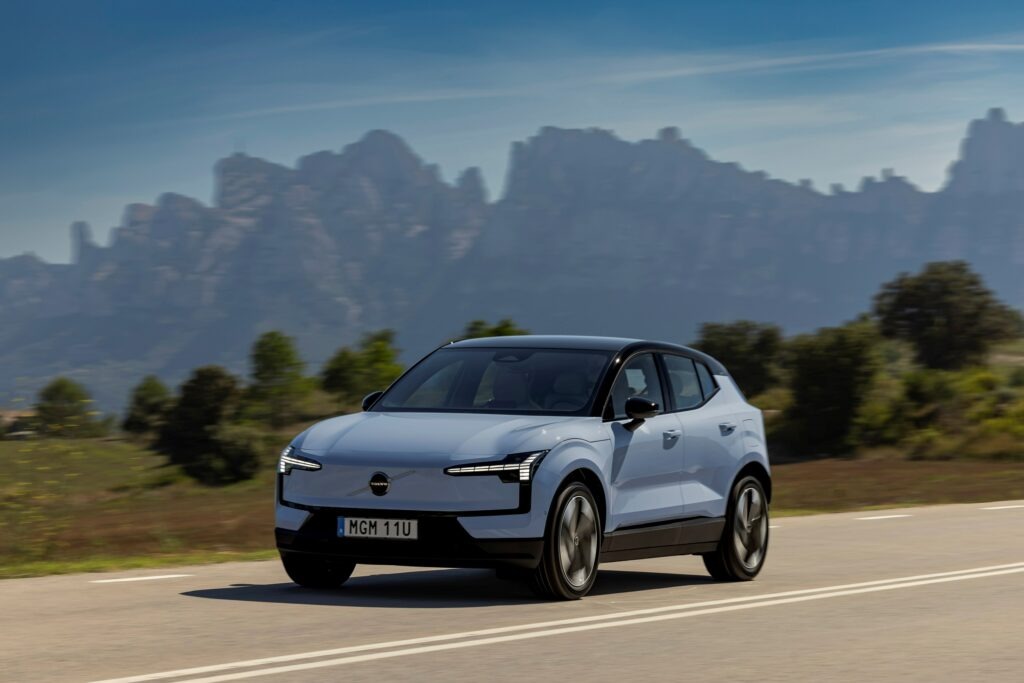Growth forecast for European EV market despite incentive impact
27 March 2024

Even with incentive changes, Europe’s new electric vehicle (EV) market is still forecast to grow. Neil King, head of forecasting at EV Volumes (part of J.D. Power), presents the outlook.
Europe’s new light-vehicle market, made up of passenger cars and light-commercial vehicles (LCVs), grew by 13.9% year-on-year in 2023. The sector was aided by improving supply, which reduced order backlogs created by component shortages in previous years. However, order intake is currently subdued because of high interest rates and cost-of-living increases.
EV Volumes forecasts that Europe’s combined new passenger-car and LCV market will grow by 3.1% this year. This equates to 15.2 million units, far short of the 18 million light vehicles registered in 2019. The European market is unlikely to return to this level anytime soon and is not expected to surpass this figure before 2035.
Shrinking subsidies
Electric vehicle registrations in Europe increased by 17.4% year-on-year in 2023, to 3.15 million units. This allowed the powertrains to take a joint 21.4% share of all light-vehicle deliveries, up from 20.7% in the previous year.
However, the EV market faced challenges in several countries throughout 2023, which may have impacted registrations. France saw its subsidies reduced, while Germany ended incentives for business purchases in September, and abruptly in December for private buyers. Even Norway, considered the leading market in Europe for EVs, announced it was ending VAT exemption on the powertrains.
There are more challenges ahead in 2024. With no more incentives in Germany, the country’s EV market will experience its first full year without financial aid for buyers. In France, subsidies for company buyers have now concluded. Meanwhile, the number of vehicles eligible for incentives has been cut, with the French government removing models exported into Europe.
Furthermore, most legacy vehicle manufacturers can stay safely below their required CO2 limits without selling more EVs. This means their attention can return to more profitable internal-combustion engine (ICE) vehicles.
EV growth expected
More positively, both Italy and Spain are considering new incentive schemes for 2024, to help boost uptake in their markets. Carmakers are also rolling out more affordable battery-electric vehicles (BEVs), one example being the new Citroen e-C3. Europe will also benefit from BYD’s regional expansion plans. Other Chinese OEMs will follow suit as they look beyond their domestic market.
For 2024, EV Volumes expects European EV deliveries to grow by 18% year on year. This equates to 3.7 million new models. This is despite the anticipated lacklustre growth of the wider light-vehicle market. EVs will account for around a quarter of all light-vehicle sales.
The growth will be predominantly driven by BEVs, volumes of which are forecast to grow by 23.5% this year. The all-electric technology will dominate the EV market, accounting for 72% of registrations, with plug-in hybrids (PHEVs) making up the remaining 28%.
PHEVs are also forecast to improve in 2024, with 5.9% growth. The technology offers a stepping-stone between ICE and BEV technologies, something that may be attractive to buyers. In addition, the removal of incentives for all-electric models in Germany means they have lost their price advantage over PHEVs. This could benefit the plug-in hybrid powertrain in the coming months.
Market momentum slows
Compared to the previous EV Volumes forecast, the 2024 EV volume and share expectations for Europe have been slightly reduced. Although the outlook for total European light-vehicle deliveries has increased, the net effect is not positive enough to balance out the negative influences.
Changing incentives, together with countries pushing back on EU plans for zero-emission-only new-vehicle sales from 2035, has affected the outlook. The forecast now foresees slightly lower EV shares moving forward.
The European market share of BEVs and PHEVs combined is forecast to reach 29.4%, in 2025, down from the previous forecast of 31.1%. EVs will then take a 67.3% share in 2030 (was 68.6%), and a 94.5% share in 2035 (was 94.9%).
The forecast for 2035 includes some tolerance for timing interpretations of the zero-emission-only new-vehicle sales bans. It also allows for exemptions for ICE vehicles that may be deemed unsuitable for full electrification.
LCVs lag behind
The light-commercial vehicle market is still seeing slower EV uptake than the passenger-car sector. However, the 49% growth for LCV EVs in 2023 is encouraging, especially compared to the 16% growth for passenger cars.
High prices compared to diesel models are still restraining this uptake. Yet there are key new BEV versions of popular models, such as the Ford Transit, Renault Trafic, and VW Transporter, that will help demand. Additionally, upgraded versions of the small, medium, and large electric vans offered by Stellantis brands will drive the market forward.
EV Volumes now forecasts that the EV share of LCVs will climb from 7.5% in 2023, which was already up from 5.8% in 2022, to a market hold of 11.1% in 2024. This will then improve to 16.1% in 2025 and 58.6% in 2030.
Long term, the ban on sales of new petrol and diesel vehicles for 2035 will further accelerate the transition to all-electric LCVs.
The forecast assumes that all Western and Central European markets will follow the directive, allowing for some exemptions and grace periods. Therefore, the zero-emission vehicle market does not reach 100% coverage in 2035 but is forecast to achieve a 94.1% share, compared to 94.6% for passenger cars.
The role of e-fuels and other CO2-neutral ICE fuels is still uncertain, but will likely be limited to niche concepts. EV Volumes also expects the deployment of hydrogen fuel-cell vehicles (FCEVs) to be limited in the LCV market, with their share peaking at just 0.03%.


